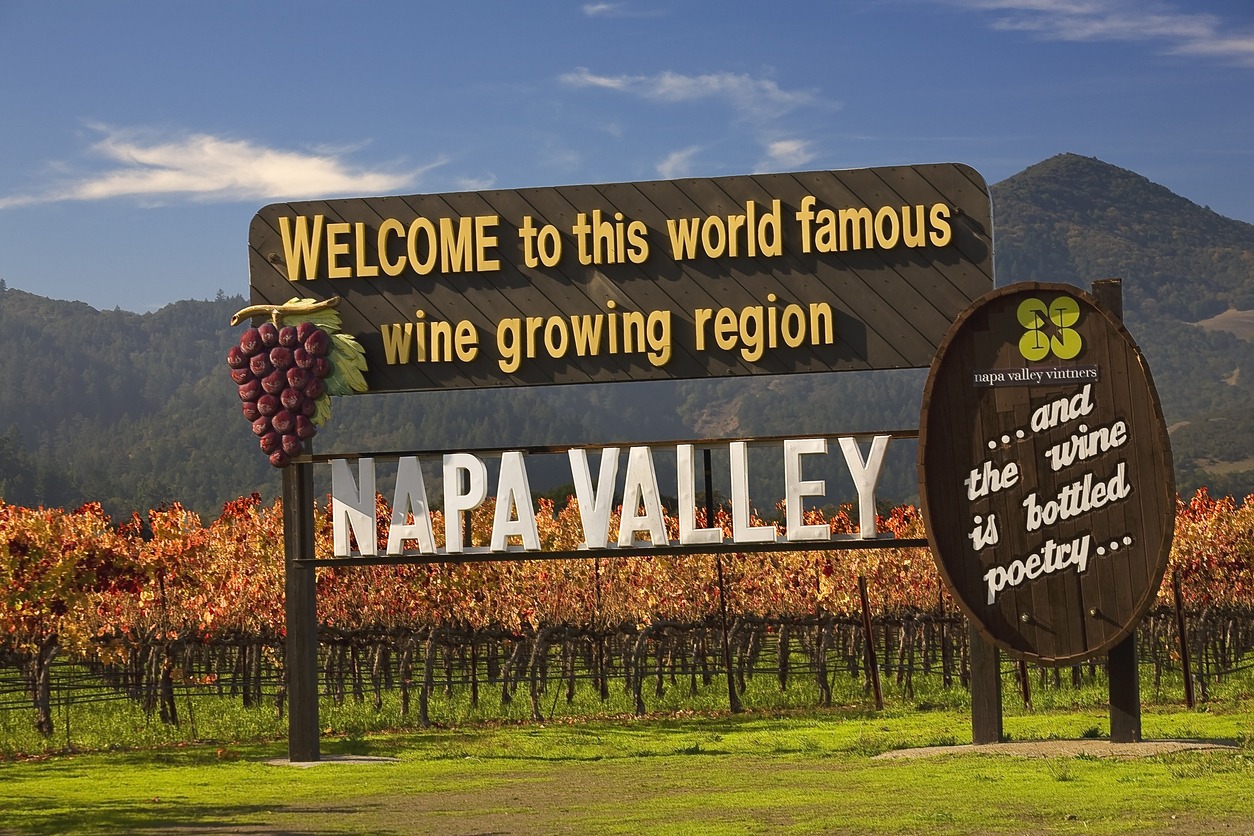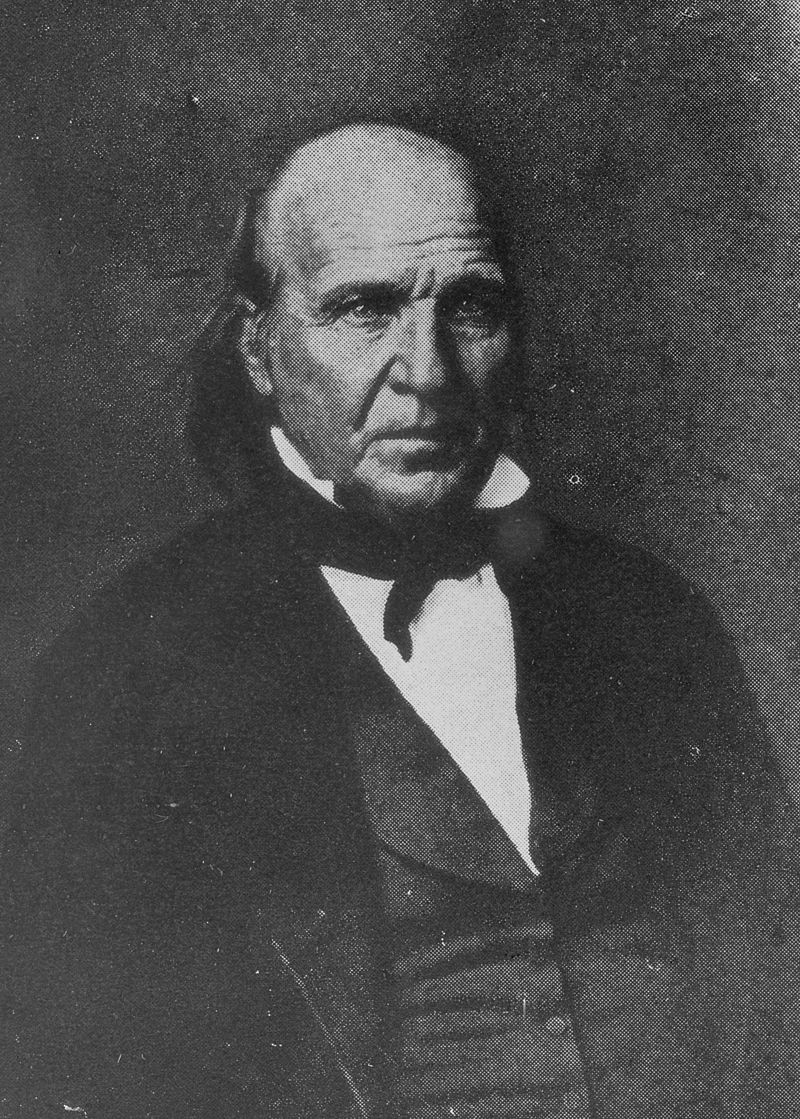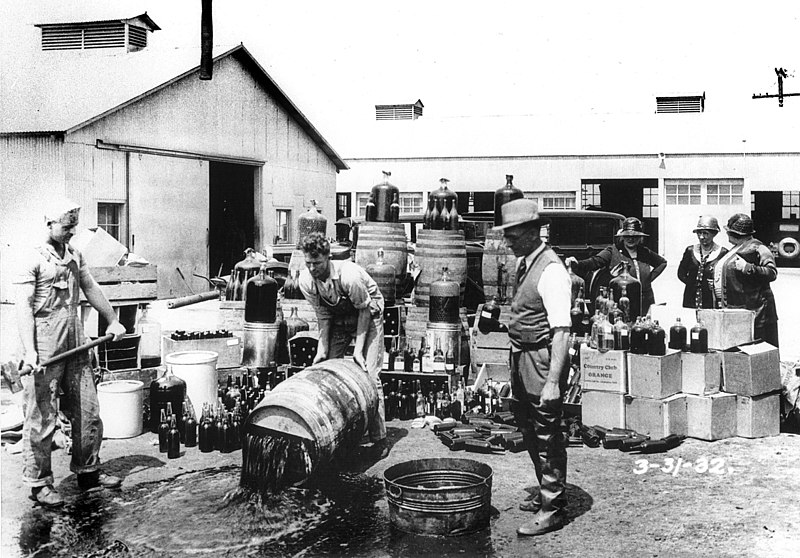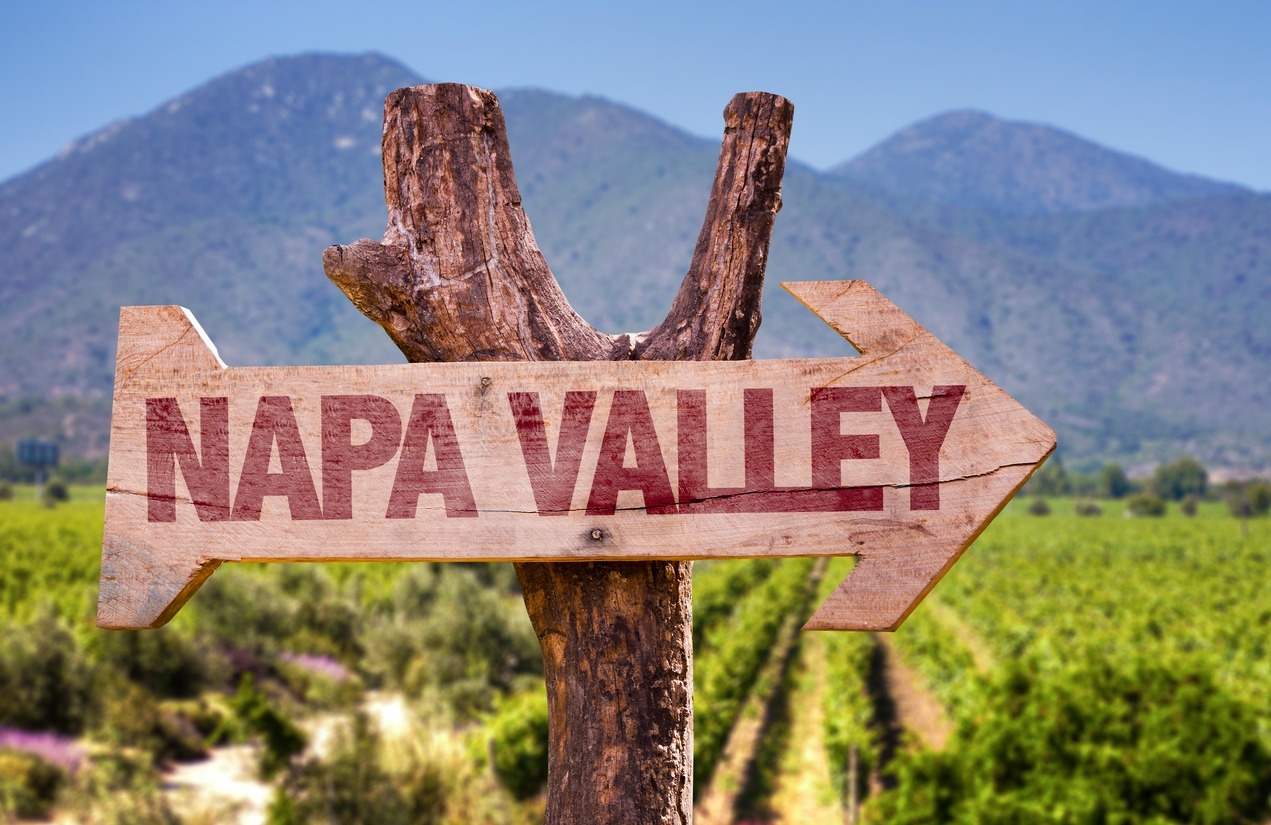When people think of American wine, Napa Valley often comes to mind, as the region is celebrated in the contemporary global wine industry.
Napa Valley is home to over 550 wineries and has become synonymous with top-quality Cabs and Chardonnays. Despite producing just 4% of California’s wine, it has earned a global reputation as one of the world’s finest winemaking regions. Napa became California’s first American viticultural area (AVA) in 1981, but its winemaking history goes back much further.
Learn how the winemaking industry in Napa Valley came to be.
Early History
Even before European settlers arrived in California, wild grapes thrived in the region, and indigenous peoples harvested them for food and other uses. When Spain claimed California in the late 1700s, they introduced European vines and started making wines and brandy at Franciscan missions.
The story of Napa Valley’s grape growing and winemaking begins with George Yount, an American who settled in the area in the early 19th century. In 1839, Yount constructed his home and grain mill close to the Napa River, and that same year, he planted the first Mission varietal (Vitis vinifera) cuttings. As the first American settler in what would later become Napa County, Yount holds the distinction of being the region’s inaugural winemaker. His pioneering efforts, along with those of other trailblazers, laid the essential groundwork for the future of winemaking in the area.
During that time, California was not a state yet and was still part of Mexico. Today, Yountville, the small town named after him, is famous for its gourmet cuisine.
In 1848, gold was discovered in California, leading to the famous Gold Rush of 1849. The rush of people hoping to strike it rich created a demand for goods and services, including wine. Many of these newcomers were of European descent and brought a taste for wine with them.
The Gold Rush brought about an opportunity for entrepreneurship, as the growing population fueled the need for various products, including wine. This surge in demand further accelerated the development of California and the practice of winemaking.
Establishing an Industry
Following George Yount’s lead, others also tried their hand at cultivating vines in Napa Valley, but not all took it seriously. Edward Bale, Yount’s neighbor, planted missionary grapes on his land, and Samuel Brannan purchased a large tract of land, naming it Calistoga, and planted over 100 acres of vines.
However, it was John Patchett who was credited with creating Napa’s first official vineyard and winery. He was a vintner who began planting vines in 1854, and with the help of esteemed winemaker Charles Krug (who later started his own winery), they were producing wines just three years later. The wine industry in California was so young that they had to use an old cider press since there were no wine presses Available.
In 1859, Pratchett built his first wine cellar, and the following year, he received the first-ever review of a California wine published in the California Farmer Magazine. Renowned critic Robert Parker praised the white wine for its clarity, lightness, brilliance, and high quality. He also commended the excellent red wine made by Pratchett’s winemaker, Charles Krug.
Charles Krug recognized the demand for wine and capitalized on it by opening Napa Valley’s first commercial winery. This success inspired a wave of viticultural entrepreneurship, making others join the industry. Over the next 20 years, Napa Valley saw the establishment of over 140 wineries, including iconic ones like Schramsberg, Beringer, and Inglenook, which continue to thrive to this day.
From 1870 to 1880, Napa County’s wine production skyrocketed by almost 1000%, making it California’s leading county in terms of wine output by 1890. This growth was aided by infrastructure developments like the telegraph and the railroad, as well as the availability of cheap Chinese labor, which made it easier to transport crops, wine, and tourists.
During this wine production boom, California wine faced issues with false labeling and dishonest practices. To improve the industry’s image, Gustave Niebaum, a wealthy businessman, established Inglenook Winery in 1888. He adopted French methods and techniques to grow high-quality wine grapes. Inglenook wines gained global exposure and recognition when they won awards at the 1889 World’s Fair in Paris, attracting other wealthy entrepreneurs to invest in Napa’s winemaking business.
At that time, Napa harvests were so successful that a surplus of grapes made the fruit cheap. However, overproduction would be the first of the many challenges Napa Valley had to face.
The Major Setbacks
The rapid expansion of Napa Valley’s wine industry came to a sudden stop when a series of damaging events hit the region. First, at the turn of the century, grape prices plummeted due to an oversupply, causing significant financial strain. Then, the arrival of a devastating vineyard pest called phylloxera wreaked havoc in the region, destroying over 80% of the vineyards in Napa Valley.
Thankfully, a solution was found by grafting the scion of European vines onto American rootstock, which proved resistant to the phylloxera. This horticultural breakthrough revolutionized viticulture worldwide; today, most vineyards across the globe use American rootstock.
As Napa’s vineyards slowly recovered from the plague, another challenge arose with the onset of Prohibition. The Temperance Movement in the United States led to the ratification of the 18th Amendment, which banned the production, distribution, and consumption of alcohol. This legislative blow forced the closure of nearly all wineries in California, including those in Napa. Farmers shifted their focus to other crops like walnuts to survive.
However, some Napa wineries managed to survive by exploiting a loophole in the Amendment. They obtained permits to produce sacramental wine for church services, allowing them to continue operations during the dry years of Prohibition. Beringer Winery was among those that persevered.
After enduring both phylloxera and Prohibition, Napa’s wineries finally saw a resurgence in the 21st Amendment when the ban on alcohol was repealed in 1933. However, that was the time of the Great Depression, and the Napa County wine industry struggled to recover fully until the 1960s.
During Prohibition, The wine industry in Napa Valley faced major setbacks and remained in a state of decline for the next several decades.
The Emergence of Napa Valley
However, despite these difficulties, Napa Valley’s wineries showed resilience and determination. In 1944, seven vintners came together to establish the Napa Valley Vintners Association, working collaboratively to revitalize the local wine industry. This cooperation and collective effort led to significant advancements and a remarkable revival in the latter part of the 20th century.
Robert Mondavi, an equally influential and renowned figure in the Napa wine scene, played a pivotal role in transforming the region. In 1966, he took over the Krug operation and established Napa’s first major winery after the end of Prohibition. As a visionary winemaker and strategic marketer, Mondavi dedicated himself to crafting high-quality wines and elevating Napa to new heights of excellence. He firmly believed that Napa had the potential to produce wines that could rival any in the world.
This belief was put to the ultimate test in 1976 during the Tasting of Paris, a blind tasting organized by Steve Spurrier. The event aimed to promote Spurrier’s wine school and celebrate the American Bicentennial. The judges, some of the finest tasters in France, were astounded by the quality of Napa Valley wines. Both the top-earning red and white wines were from Napa – a 1972 vintage cabernet from Stag’s Leap Wine Cellars and a ’73 chardonnay from Chateau Montelena. This unexpected upset shattered the long-held notion that only European wines could be the best.
The news of this triumph spread like wildfire through the press, establishing Napa Valley as a premier wine region. Since then, Napa has continued to impress, and today, it is home to over 550 wineries producing some of the world’s most sought-after, stunning, and prestigious wines.
What is the Climate and Topography of Napa Valley?
Napa Valley’s position and unique geographical features make it a perfect place for viticulture. The region’s Mediterranean climate, influenced by its geographic location, geology, and diverse soil types, plays a crucial role in producing high-quality grapes and maintaining the integrity of the wine. This type of climate is relatively rare worldwide, and Napa Valley’s conditions are often likened to a “Goldilocks” zone for growing grapes.
The valley stretches for approximately 30 miles along the Pacific coast, nestled between the Mayacamas and Vacas Mountains. This setting results in warm, sunny days and cool nights, thanks to the marine fog, creating an ideal diurnal range that benefits grape cultivation. Despite its relatively small size, Napa Valley boasts numerous microclimates that cater to the unique needs of various grape varieties. The region’s terroir, combined with the innovative approaches of winemakers, has contributed to its well-deserved reputation as a celebrated wine-growing destination.
Napa Valley boasts diverse soils and a varied topography – with over 50% of the different soil types found within its boundaries – enabling it to support the growth of several grape varieties. From valley floors at sea level to mountain vineyards with elevations exceeding 2,000 feet, the region’s topography offers a rich tapestry for growers and vintners to create distinct winemaking zones.
One of Napa Valley’s significant advantages is its remarkable day-to-night temperature shift, which allows grapes to ripen slowly, resulting in higher acidity levels in both the grapes and the wine. This temperature shift is a product of the valley’s rare Mediterranean climate, found on only 2% of the planet, characterized by wet winters and dry summers, perfect for cultivating vineyards. The surrounding mountains further contribute to the unique terroir of the region.
However, it was the historic Judgment of Paris in 1976 that catapulted Napa Valley to international fame. In this blind-tasting competition, Napa’s Cabernet Sauvignon and Chardonnay were pitted against the best wines of Bordeaux and Burgundy. The shocking outcome revealed that the winning wines were from Napa Valley, making it widely recognized as a premier wine-growing region on the global stage. As a result, Napa Valley’s reputation skyrocketed, and it became an acclaimed symbol of excellence in winemaking.




